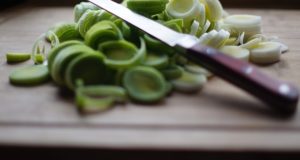Tuning a block plane is often an overlooked practice. By this I mean many woodworkers, myself included at one time, will buy a block plane, take it home and start using it right from the box.
While some brands have come a long way towards selling a product that is actually ready for use, there is still the potential to gain much more from it.
To many woodworkers, the process of taking a brand new plane, or even an older one, and spending a couple hours on tuning it seems to be a waste of time. I used to feel that way myself. That is, until I finally got around to giving it a try. At this point I realized just how important it really is to getting the most out of the tool.
A properly tuned plane will glide through the wood with remarkable ease. Even planning the end of a board will be successful. The shavings coming out of the plane will be fine enough to see through!
The first step in tuning any plane is checking the “sole” or bottom of the plane, for flatness. This can be accomplished with a steel straightedge. Lay it diagonally across the sole and look for any light between the straightedge and the plane. Take note to any hollows. Now lay it across the other diagonal corners and check that. Again, take note of any hollow areas. Using the same technique check the front to back flatness on both sides of the sole.
The object here is to determine if the sole is dead flat. If it isn’t, and most often it isn’t, you’ll need to flatten it. It helps to take a magic marker and draw an “x” from corner to corner, and a rectangle around the outer edges of the sole.
Using a piece of 3/8″ plate glass, wet it with some mineral spirits, and lay some wet / dry sandpaper on it. The mineral spirits will hold the paper tight to the glass. It will also act as a lubricant while flattening the bottom. The grit of the paper is determined by how bad the bottom is. I would start with 400 grit paper.
Holding the plane firmly against the paper, rub it back and forth a few times, and check the marks you drew on the bottom. If parts of the marks are missing, it shows where the high spots are. Continue sanding until all the marks are removed. This sounds harder than it actually is.
Once you have the sole flat, switch to finer sandpaper and start the polishing process. By working your way through the various grits of paper, going finer and finer, the bottom will become polished. I usually take mine to a mirror finish. The good news is once this has been done, restoring it to the same condition later will take only a few minutes.
Next it is time to do the same procedure to the bottom flat of the blade. Again bring it to a mirror finish going through the various grits of paper. As before, this only needs to be done once, and have a minor touch up on occasion.
With the back side polished, the bevel of the blade will need honing. A good jig to hold the proper angle will help out. This too wants to be a polished edge, with no burr left on the back side. Switching between the front and back will eventually form a wire edge that will gradually break away.
Now you want to check the opening in the sole, where the blade protrudes, and check for smoothness. You may want to run a file on this, just to clean it up a bit. Often they’re a little rough. The same goes for the bed of the blade.
Waxing the bottom of the sole will help to protect the metal, as well as allow it to glide across the wood. Once done, reassemble the plane and adjust the blade square to the body, and set the depth for a fine cut.
You’ll be amazed at the difference in which the blades slices through the wood, and the resulting surface of the area planed. It will appear to be burnished, as it will glimmer in the light.
An occasional touch up will take very little time, and will keep the shavings flying out of the plane.



